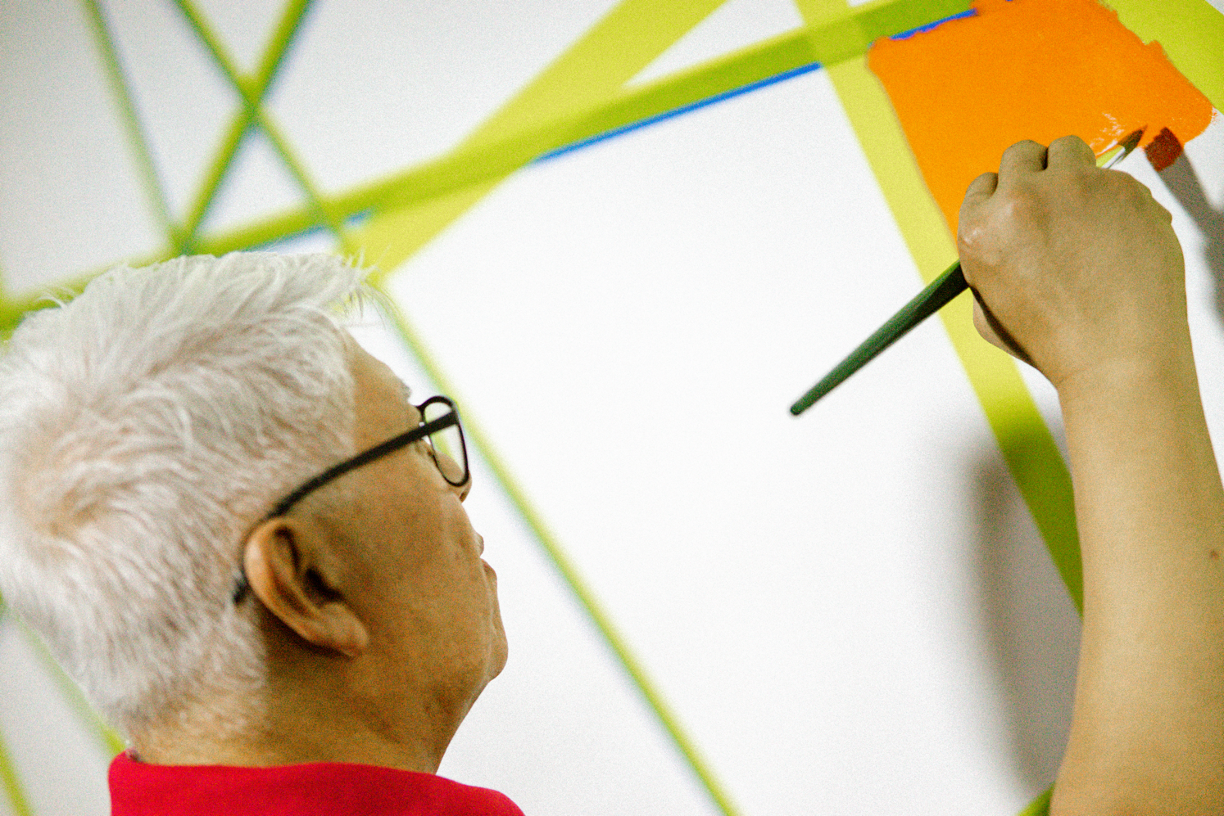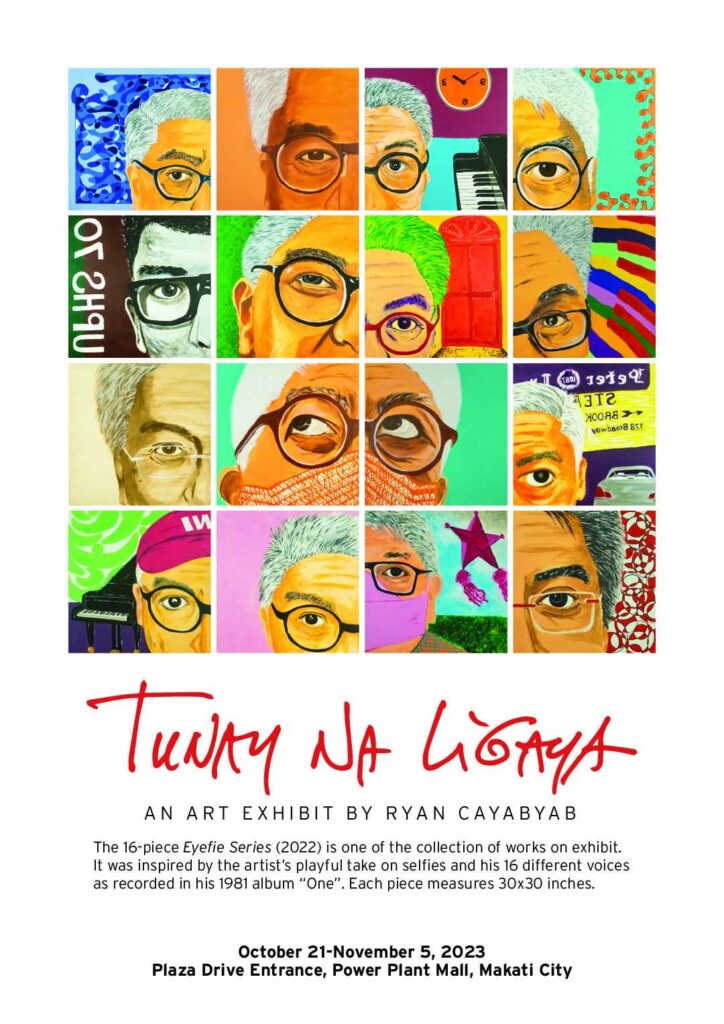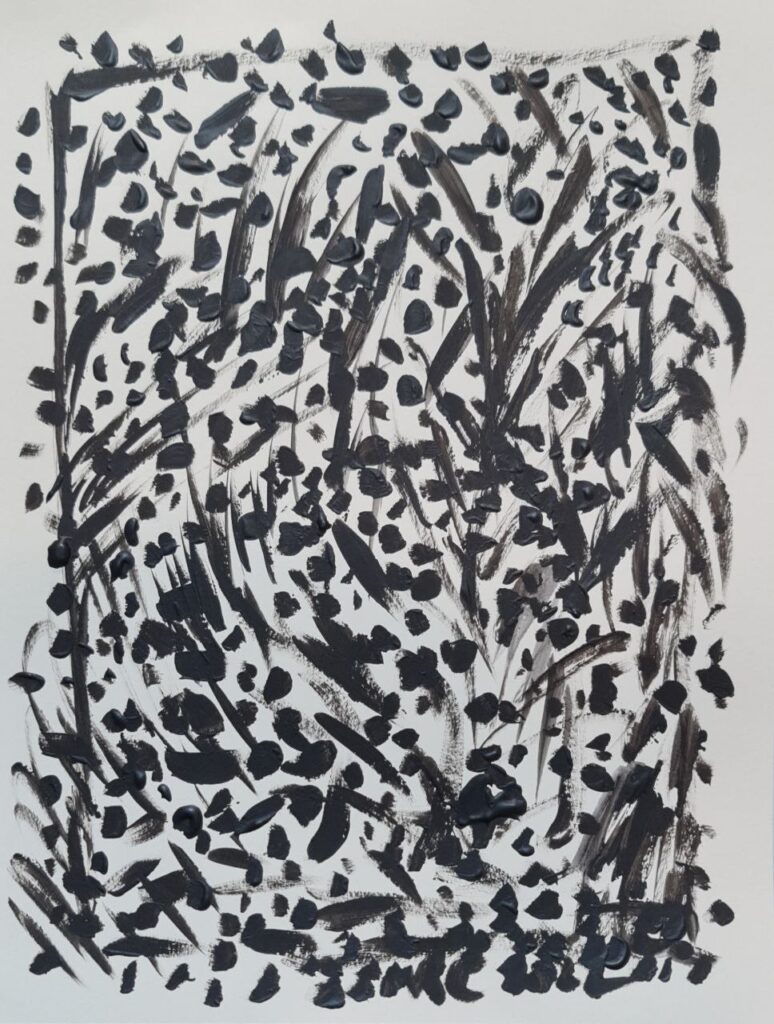The National Artist for Music, unbeknownst to many, is a Renaissance man who showed sparks of talent in the visual arts at a young age. Through the decades, that talent had played second fiddle to his music until the pandemic hit, reacquainting Ryan with paint, brush and canvas. Dubbed as Tunay na Ligaya, also the title of one of his hit pop songs, the 16-piece art exhibit opens on Oct. 21 at the Power Plant Mall’s Plaza Drive entrance.
By Louise Jashil Sonido
During a period of difficulty, fear, and isolation, happiness — “ligaya” — becomes, by necessity, an exercise in both survival and resistance. Amid the COVID-19 pandemic, for National Artist for Music Ryan Cayabyab, thriving in a time of scarcity meant taking root in fresh soil: resting his hands from the ivory keys to pick up brush and palette, and taking paint to canvas to create new, visual symphonies.
Cayabyab’s journey into the visual arts was by no means unprecedented. Music and painting were constantly in his life since childhood, from the time their family lived in the UP Diliman campus with 10 lady boarders enrolled in the College of Music, to when they transferred to another home that they then shared with aunts and cousins enrolled in the College of Fine Arts. “It was very natural—osmosis,” Cayabyab shares. “Nakikita ko lang sila. (I grew up seeing what they do.) But I had been drawing since I was a kid.”
In 1968, he joined the YMCA National Art Competition at 14 years old using the paints and canvases his relatives had left behind when they moved away. He turned in the piece that he had titled Mankind is One, and learned by telegram a week later that he had placed third. He won P 50 – a considerable sum then. Cayabyab bought two cans of corned beef and two cans of sausages before giving the rest of his prize money to his father.
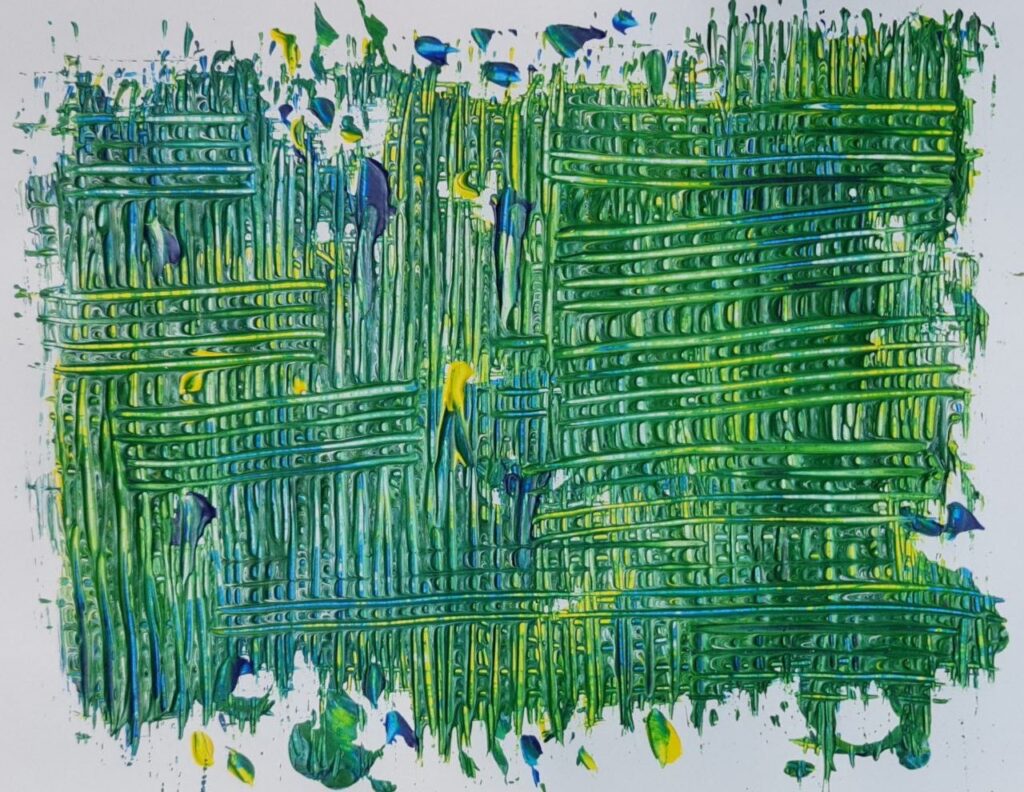
Doodles in private
In the years that followed, although he soon turned more seriously to music, he would continue to doodle constantly in pen and ink. During a music camp that he headed in 2010, his sketches of the auditioners and participants became some of their most treasured mementos. While music became his life, drawing stayed a constant friend.
When the COVID-19 pandemic struck, performance halls and rehearsal rooms closed their doors as musicians relented to mostly virtual performances. Cayabyab was no less startled by the sudden vacuum of activities and drop in livable revenue. “I was resigned,” he recalls. “Wala na kaming trabaho (we didn’t have any work) as live performers.”
The forced shift to online activity set a new stage for his art practice. Cayabyab was drawn back to the canvas in 2022 on an artistic investigation that soon found its way to a very active Facebook following.
He had heard of a medium called acrylic, a type of paint that supposedly looked like oil but can act like watercolor. Curious, he went on an experiment. He bought one tube of black acrylic and tried it out on some cheap art paper, resulting in a small painting of dots and dashes. Thrilled with the discovery, he posted the piece on social media, and—as with his famous doodles—friends were quick to ask him for it. The episode happened in several cycles as his fascination for the medium grew, and his little paintings quickly grew a following among friends.
And thus, the journey (re)started.
Soon, Cayabyab was buying acrylic paints in more colors; people started sending him painting materials; more family and friends asked for his art pieces; and eventually, to his surprise and bemusement, people began to offer to pay for them.
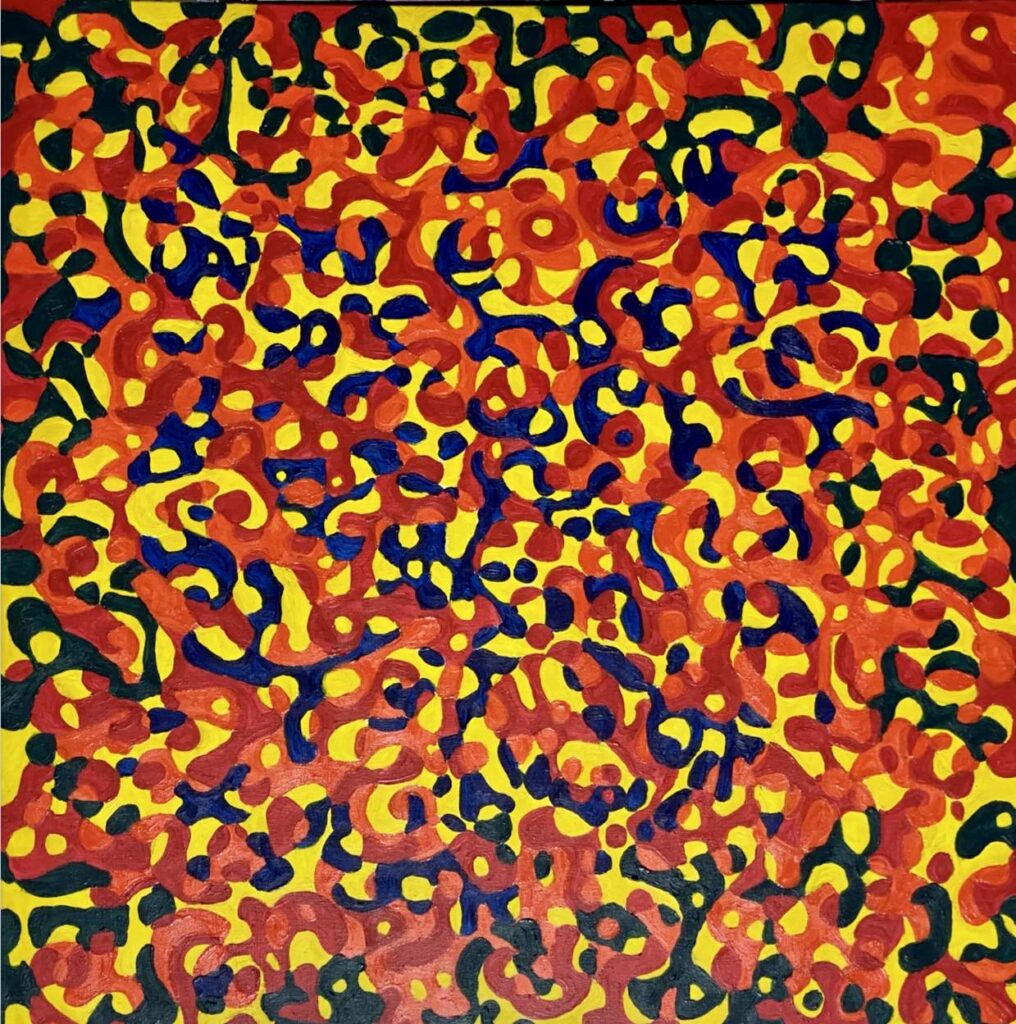
Hooked on acrylic
“I wasn’t thinking of it as a commercial thing,” Cayabyab says. “I just wanted to try doing this [acrylic painting], until I was so hooked.” One experiment led to another, until he was painting with higher quality acrylics and discovering different canvases of varying textures, thicknesses, sizes and shapes.
While amused that his friends were willing to pay for his works, Cayabyab confesses he was not under any illusion of innate artistic brilliance: “Hindi naman ako painter, musician ako,” (I’m not a pianter. I’m a musicina) he insists, good-humoredly. But besides the exhilaration of discovery and exploration, he could not deny the practicality of having an alternative means of income.
But more importantly for Cayabyab, the joy he had found in his return to painting in turn had found a means of being shared with others through his growing following. And the opportunity for him to tell different stories, in ways new to himself and to his audiences, had presented itself.
On the encouragement of family and friends, he eventually bit the bullet: he would show his works in a public exhibition.
The artist inspires, not only for their work, but for their tenacity and vision. Cayabyab’s curiosities had led him into foreign territory, and he confesses of his upcoming debut in the field of visual arts, “It feels like I’m entering a different country.”
Delight against all odds has always been at the core of Cayabyab’s strength as an artist. In the same way that his music celebrates the range of Philippine traditions, cultural quirks, and human sentiments, his paintings are testament to his constant delight in the new, the fun, and the challenging.
This tenacious creative impulse shows itself concretely in his 16-part Eyefie (2022), which references his iconic a capella album of 16 voices, One (1981). Inspired by his habit of taking selfies with fellow musicians, performers, family, and friends, the series depicts playfully how, more often than not, only part of his face—usually one bespectacled eye—would make it into the frame in these pictures.
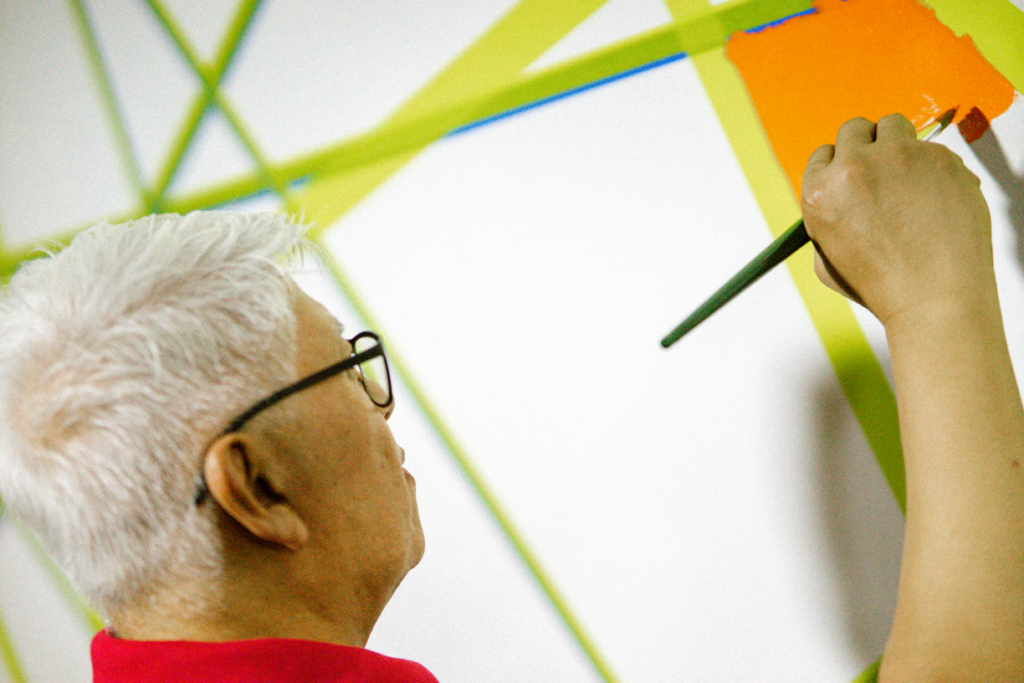
Inspired by One
The poetic resonance of introducing his new journey as a visual artist with a series that harks back on the album that launched his musical career is testament to the same artistic courage and humility, the same creative rootedness, that has sustained, nourished, and elevated Cayabyab’s craft through the years.
As if recalling One in 1981, when he was just finishing his bachelor’s degree in the UP College of Music and was gearing up for his first album to be his last, Cayabyab’s journey with the exhibit now is both a return and homage to youth: “Bata uli ako, kasi (I’m like a child again because) this is new, so I’m young again, and I’m starting again.”
Landbank of the Philippines reached out to Cayabyab last year to commission a song for their 60th anniversary. The management also invited him to speak about his journey as a musician during their planning session. There, he shared how he had started reinventing himself as an artist and how he had recently ventured into the visual arts. Landbank then commissioned production of Directions for the Landbank lobby to herald their own new era.
Doing Directions challenged Cayabyab and led him to immerse more fully in the creative process, this time with more collaborators. Eventually, he would also revel in the excitement of the curatorial process when visual artist Nell Belgado organized his works into several series.
On October 21, Cayabyab’s journey into the visual arts will unfold to the public in his first solo art exhibition, Tunay na Ligaya. Much like with One, he quips of the many excitements and apprehensions in his new first: “I will just enjoy what happens next.”
Tunay na Ligaya is an offering of joy, emanating from that unique happiness that emerges from the pleasure of curiosity and discovery. “You should dig deep into your inner selves and see what your other passions and interests are,” Cayabyab says. “There are still so many things that we can do. There is no age limit to what you can do.”

